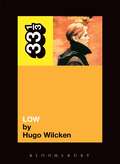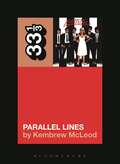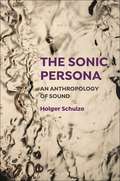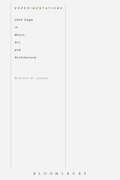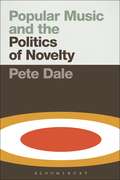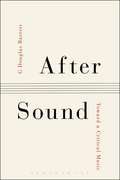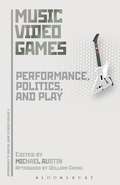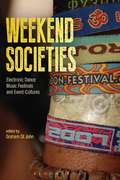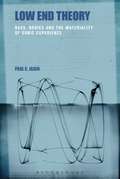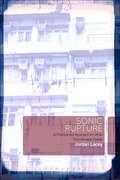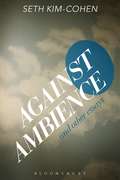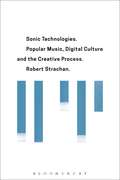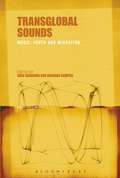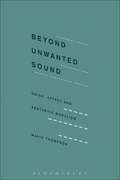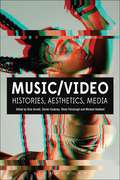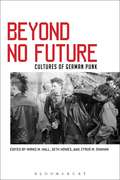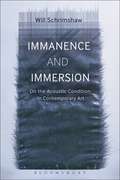- Table View
- List View
Pavement's Wowee Zowee (33 1/3)
by Bryan CharlesPavement wrapped up at Easley Recording in Memphis. They mixed the tracks and recorded overdubs in New York. They took a step back and assessed the material. It was a wild scene. They had fully fleshed-out songs and whispers and rumors of half-formed ones. They had songs that followed a hard-to-gauge internal logic. They had punk tunes and country tunes and sad tunes and funny ones. They had fuzzy pop and angular new wave. They had raunchy guitar solos and stoner blues. They had pristine jangle and pedal steel. The final track list ran to eighteen songs and filled three sides of vinyl. Released in 1995, on the heels of two instant classics, Wowee Zowee confounded Pavement's audience. Yet the record has grown in stature and many diehard fans now consider it Pavement's best. Weaving personal history and reporting-including extensive new interviews with the band-Bryan Charles goes searching for the story behind the record and finds a piece of art as elusive, anarchic and transportive now as it was then.
The Rolling Stones' Some Girls (33 1/3)
by Cyrus R.K. PatellIt's October 1977, and the Rolling Stones are in a Paris recording studio. They're under siege. Keith Richards's legal troubles after his arrest for heroin possession threaten the band's future, and the broad consensus among rock aficionados is that the band will never again reach the heights of Exile on Main Street.But Mick Jagger is writing lyrics inspired by the year he has just spent in New York City, where he was hanging out with the punks at CBGB and with the glitterati at Studio 54. And new bandmember Ron Wood is helping Richards recapture the two-guitar groove that the band had been missing since the Brian Jones era. The result? Some Girls, the band's response both to punk rock and to disco, an album that crackles with all the energy, decadence, and violence of New York in the 1970s. Weaving together the history of the band and the city, Cyrus R. K. Patell traces the genesis and legacy of the album that Jagger would later call the band's best since Let It Bleed.
David Bowie's Low (33 1/3)
by Hugo WilckenLos Angeles, 1976. David Bowie is holed up in his Bel-Air mansion, drifting into drug-induced paranoia and confusion. Obsessed with black magic and the Holy Grail, he's built an altar in the living room and keeps his fingernail clippings in the fridge. There are occasional trips out to visit his friend Iggy Pop in a mental institution. His latest album is the cocaine-fuelled Station To Station (Bowie: "I know it was recorded in LA because I read it was"), which welds R&B rhythms to lyrics that mix the occult with a yearning for Europe, after three mad years in the New World.Bowie has long been haunted by the angst-ridden, emotional work of the Die Brucke movement and the Expressionists. Berlin is their spiritual home, and after a chaotic world tour, Bowie adopts this city as his new sanctuary. Immediately he sets to work on Low, his own expressionist mood-piece.
Blondie's Parallel Lines (33 1/3)
by Kembrew McLeodBlondie's Parallel Lines mixed punk, disco and radio-friendly FM rock with nostalgic influences from 1960s pop and girl group hits. This 1978 album kept one foot planted firmly in the past while remaining quite forward-looking, an impulse that can be heard in its electronic dance music hit "Heart of Glass.†? Bubblegum music maven Mike Chapman produced Parallel Lines, which was the first massive hit by a group from the CBGB punk underworld. By embracing the diversity of New York City's varied music scenes, Blondie embodied many of the tensions that played out at the time between fans of disco, punk, pop and mainstream rock. Debbie Harry's campy glamor and sassy snarl shook up the rock'n'roll boy's club during a growing backlash against the women's and gay liberation movements, which helped fuel the "disco sucks†? battle cry in the late 1970s. Despite disco's roots in a queer, black and Latino underground scene that began in downtown New York, punk is usually celebrated by critics and scholars as the quintessential subculture. This book challenges the conventional wisdom that dismissed disco as fluffy prefab schlock while also recuperating punk's unhip pop influences, revealing how these two genres were more closely connected than most people assume. Even Blondie's album title, Parallel Lines, evokes the parallel development of punk and disco-along with their eventual crossover into the mainstream.
The Raincoats' The Raincoats (33 1/3)
by Jenn PellyIn 1979, from the basement of a London squat, the Raincoats reinvented what punk could be. They had a violin player. They came from Portugal, Spain, and England. Their anarchy was poetic. Working with the iconic Rough Trade Records at its radical beginnings, they were the first group of punk women to actively call themselves feminists. In this short book – the first on the Raincoats – author Jenn Pelly tells the story of the group's audacious debut album, which Kurt Cobain once called "wonderfully classic scripture.†? Pelly builds on rare archival materials and extensive interviews with members of the Raincoats, Sleater-Kinney, Bikini Kill, Hole, Scritti Politti, Gang of Four, and more. She draws formal inspiration from the collage-like The Raincoats itself to explore this album's magic, vulnerability, and strength.
Gallery Sound (EX:CENTRICS)
by Caleb KellySound is an integral part of contemporary art. Once understood to be a marginal practice, increasingly we encounter sound in art exhibitions through an array of sound making works in various art forms, at times played to very high audio levels. However, works of art are far from the only thing one might hear: music performances, floor talks, exhibition openings and the noisy background sounds that emanate from the gallery café fill contemporary exhibition environments. Far from being hallowed spaces of quiet reflection, what this means is that galleries have swiftly become very noisy places. As such, a straightforward consideration of artworks alone can then no longer account for our experiences of art galleries and museums. To date there has been minimal scholarship directed towards the intricacies of our experiences of sound that occur within the bounds of this purportedly 'visual' art space. Kelly addresses this gap in knowledge through the examination of historical and contemporary sound in gallery environments, broadening our understanding of artists who work with sound, the institutions that exhibit these works, and the audiences that visit them. Gallery Sound argues for the importance of all of the sounds to be heard within the walls of art spaces, and in doing so listens not only to the deliberate inclusion of sound within the art gallery in the form of artworks, performances, and music, but also to its incidental sounds, such as their ambient sounds and the noise generated by audiences. More than this, however, Gallery Sound turns its attention to the ways in which the acoustic characteristics specific to gallery spaces have been mined by artists for creative outputs, ushering in entirely new art forms.
The Sonic Persona: An Anthropology of Sound
by Holger SchulzeIn The Sonic Persona, Holger Schulze undertakes a critical study of some of the most influential studies in sound since the 19th century in the natural sciences, the engineering sciences, and in media theory, confronting them with contemporary artistic practices, with experimental critique, and with disturbing sonic experiences.From Hermann von Helmholtz to Miley Cyrus, from FLUXUS to the Arab Spring, from Wavefield Synthesis to otoacoustic emissions, from premillennial clubculture to postdemocratic authoritarianism, from signal processing to human echolocation: This book presents a fundamental critique concerning recent sound theories and their anthropological concepts – and proposes an alternate, a more plastic, a visceral framework for research in the field of a cultural anthropology of sounding and listening.This anthropology of sound takes its readers and listeners on a research expedition to the multitude of alien humanoids and their surprising sonic personae: in dynamic and generative tension between predetermined auditory dispositives, miniscule and not seldomly ignored sound practices, and idiosyncratic sensory corpuses: a critique of the senses.I'm going to prove the impossible really exists.
Postmodern Music, Postmodern Listening
by Jonathan D. Kramer Robert CarlKramer was one of the most visionary musical thinkers of the second half of the 20th century. In his The Time of Music, he approached the idea of the many different ways that time itself is articulated musically. This book has become influential among composers, theorists, and aestheticians. Now, in his almost completed text written before his untimely death in 2004, he examines the concept of postmodernism in music. Kramer created a series of markers by which we can identify postmodern works. He suggests that the postmodern project actually creates a radically different relationship between the composer and listener. Written with wit, precision, and at times playfully subverting traditional tropes to make a very serious point about this difference, Postmodern Music, Postmodern Listening leads us to a strongly grounded intellectual basis for stylistic description and an intuitive sensibility of what postmodernism in music entails. Postmodern Music, Postmodern Listening is an examination of how musical postmodernism is not just a style or movement, but a fundamental shift in the relationship between composer and listener. The result is a multifaceted and provocative look at a critical turning point in music history, one whose implications we are only just beginning to understand.
Experimentations: John Cage in Music, Art, and Architecture
by Branden Wayne JosephExperimentations provides a detailed historical and theoretical analysis of the first three decades of experimental composer John Cage's aesthetic production (ca. 1940-1972). Paying particular attention to Cage's inter- and cross-disciplinary engagements with the visual arts and architecture during this period, the book sheds new light on some of Cage's most controversial and influential innovations, such as the use of noise, chance techniques, indeterminacy, electronic technologies, and computerization, as well as upon lesser known but important ideas and strategies such as transparency, multiplicity, virtuality, and actualization. Ultimately, it traces the development of Cage's avant-garde aesthetic and political project as it transformed from the emulation of historical avant-garde precedents such as futurism and the Bauhaus, to the development of important precedents for the post-World War II movements of happenings and Fluxus, to its ultimate abandonment in the aftermath of problems encountered in the vast, multimedia composition HPSCHD (1967-69).
Popular Music and the Politics of Novelty
by Pete DalePopular music, today, has supposedly collapsed into a 'retromania' which, according to leading critic Simon Reynolds, has brought a 'slow and steady fading of the artistic imperative to be original.' Meanwhile, in the estimation of philosopher Alain Badiou, a significant political event will always require 'the dictatorial power of a creation ex nihilo'. Everywhere, it seems, at least amongst commentators of a certain age and type, pessimism prevails with regards to the predominant aesthetic preferences of the twenty first century: popular music, supposedly, is in a rut.Yet when, if ever, did the political engagement kindled by popular music amount to more than it does today? The sixties? The punk explosion of the late 1970s? Despite an on-going fixation upon these periods in much rock journalism and academic writing, this book demonstrates that the utilisation of popular music to promote political causes, on the one hand, and the expression of dissent through the medium of 'popular song', on the other hand, remain widely in practice today.This is not to argue, however, for complacency with regards to the need for expressions of political dissent through popular culture. Rather, the book looks carefully at actual usages of popular music in political processes, as well as expressions of political feeling through song, and argues that there is much to encourage us to think that the demand for radical change remains in circulation. The question is, though, how necessary is it for politically-motivated popular music to offer aesthetic novelty?
After Sound: Toward a Critical Music
by G Douglas BarrettAfter Sound considers contemporary art practices that reconceive music beyond the limitation of sound. This book is called After Sound because music and sound are, in Barrett's account, different entities. While musicology and sound art theory alike typically equate music with pure instrumental sound, or absolute music, Barrett posits music as an expanded field of artistic practice encompassing a range of different media and symbolic relationships. The works discussed in After Sound thus use performance, text scores, musical automata, video, social practice, and installation while they articulate a novel aesthetic space for a radically engaged musical practice. Coining the term "critical music," this book examines a diverse collection of art projects which intervene into specific political and philosophical conflicts by exploring music's unique historical forms. Through a series of intimate studies of artworks surveyed from the visual and performing arts of the past ten years-Pussy Riot, Ultra-red, Hong-Kai Wang, Peter Ablinger, Pauline Boudry and Renate Lorenz, and others-After Sound offers a significant revision to the way we think about music. The book as a whole offers a way out of one of the most vexing deadlocks of contemporary cultural criticism: the choice between a sound art effectively divorced from the formal-historical coordinates of musical practice and the hermetic music that dominates new music circles today.
Hip Hop Headphones: A Scholar’s Critical Playlist
by James Braxton PetersonHip Hop Headphones is a crash course in Hip Hop culture. Featuring definitions, lectures, academic essays, and other scholarly discussions and resources, Hip Hop Headphones documents the scholarship of Dr. James B. Peterson, founder of Hip Hop Scholars-an organization devoted to developing the educational potential of Hip Hop.Defining Hip Hop from multi-disciplinary perspectives that embrace the elemental forms of Hip Hop Culture (b-boying, dj-ing, rapping, and graffiti art), Hip Hop Headphones is the definitive guide to how Hip Hop culture can be used in the classroom to engage and inspire students.
Music Video Games: Performance, Politics, and Play (Approaches to Digital Game Studies)
by Michael AustinMusic Video Games takes a look (and listen) at the popular genre of music games – video games in which music is at the forefront of player interaction and gameplay. With chapters on a wide variety of music games, ranging from well-known console games such as Guitar Hero and Rock Band to new, emerging games for smartphones and tablets, scholars from diverse disciplines and backgrounds discuss the history, development, and cultural impact of music games. Each chapter investigates important themes surrounding the ways in which we play music and play with music in video games. Starting with the precursors to music games - including Simon, the hand-held electronic music game from the 1980s, Michael Austin's collection goes on to discuss issues in musicianship and performance, authenticity and “selling out,” and composing, creating, and learning music with video games. Including a glossary and detailed indices, Austin and his team shine a much needed light on the often overlooked subject of music video games.
Weekend Societies: Electronic Dance Music Festivals and Event-Cultures
by Graham St JohnFrom massive raves sprouting around the London orbital at the turn of the 1990s to events operated under the control of corporate empires, EDM (Electronic Dance Music) festivals have developed into cross-genre, multi-city, transnational mega-events. From free party teknivals proliferating across Europe since the mid-1990s to colossal corporate attractions like Tomorrowland Electric Daisy Carnival and Stereosonic, and from transformational and participatory events like Burning Man and events in the UK outdoor psytrance circuit, to such digital arts and new media showcases as Barcelona's Sónar Festival and Montreal's MUTEK, dance festivals are platforms for a variety of arts, lifestyles, industries and policies.Growing ubiquitous in contemporary social life, and providing participants with independent sources of belonging, these festivals and their event-cultures are diverse in organization, intent and outcome. From ethically-charged and “boutique” events with commitments to local regions to subsidiaries of entertainment conglomerates touring multiple nations, EDM festivals are expressions of “freedoms” revolutionary and recreational. Centres of “EDM pop”, critical vectors in tourism industries, fields of racial distinction, or experiments in harm reduction, gifting culture, and co-created art, as this volume demonstrates, diversity is evident across management styles, performance legacies and modes of participation.Weekend Societies is a timely interdisciplinary volume from the emergent field of EDM festival and event-culture studies. Echoing an industry trend in world dance music culture from raves and clubs towards festivals, Weekend Societies features contributions from scholars of EDM festivals showcasing a diversity of methodological approaches, theoretical perspectives and representational styles.Organised in four sections: Dance Empires; Underground Networks; Urban Experiments; Global Flows, Weekend Societies illustrates how a complex array of regional, economic, social, cultural and political factors combine to determine the fate of EDM festivals that transpire at the intersections of the local and global.
Low End Theory: Bass, Bodies and the Materiality of Sonic Experience
by Paul C. JasenLow End Theory probes the much-mythologized field of bass and low-frequency sound. It begins in music but quickly moves far beyond, following vibratory phenomena across time, disciplines and disparate cultural spheres (including hauntings, laboratories, organ workshops, burial mounds, sound art, studios, dancefloors, infrasonic anomalies, and a global mystery called The Hum). Low End Theory asks what it is about bass that has fascinated us for so long and made it such a busy site of bio-technological experimentation, driving developments in science, technology, the arts, and religious culture. The guiding question is not so much what we make of bass, but what it makes of us: how does it undulate and unsettle; how does it incite; how does it draw bodily thought into new equations with itself and its surroundings? Low End Theory is the first book to survey this sonorous terrain and devise a conceptual language proper to it. With its focus on sound's structuring agency and the multi-sensory aspects of sonic experience, it stands to make a transformative contribution to the study of music and sound, while pushing scholarship on affect, materiality, and the senses into fertile new territory. Through energetic and creative prose, Low End Theory works to put thought in touch with the vibratory encounter as no scholarly book has done before.For more information, visit: http://www.lowendtheorybook.com/
Sonic Rupture: A Practice-led Approach to Urban Soundscape Design
by Jordan LaceySonic Rupture applies a practitioner-led approach to urban soundscape design, which foregrounds the importance of creative encounters in global cities. This presents an alternative to those urban soundscape design approaches concerned with managing the negative health impacts of noise. Instead, urban noise is considered to be a creative material and cultural expression that can be reshaped with citywide networks of sonic installations. By applying affect theory the urban is imagined as an unfolding of the Affective Earth, and noise as its homogenous (and homogenizing) voice. It is argued that noise is an expressive material with which sonic practitioners can interface, to increase the creative possibilities of urban life. At the heart of this argument is the question of relationships: how do we augment and diversify those interconnections that weave together the imaginative life and the expressions of the land? The book details seven sound installations completed by the author as part of a creative practice research process, in which the sonic rupture model was discovered. The sonic rupture model, which aims to diversify human experiences and urban environments, encapsulates five soundscape design approaches and ten practitioner intentions. Multiple works of international practitioners are explored in relation to the discussed approaches. Sonic Rupture provides the domains of sound art, music, creative practice, urban design, architecture and environmental philosophy with a unique perspective for understanding those affective forces, which shape urban life. The book also provides a range of practical and conceptual tools for urban soundscape design that can be applied by the sonic practitioner.
Against Ambience and Other Essays
by Seth Kim-CohenAgainst Ambience diagnoses - in order to cure - the art world's recent turn toward ambience. Over the course of three short months - June to September, 2013 - the four most prestigious museums in New York indulged the ambience of sound and light: James Turrell at the Guggenheim, Soundings at MoMA, Robert Irwin at the Whitney, and Janet Cardiff at the Met. In addition, two notable shows at smaller galleries indicate that this is not simply a major-donor movement. Collectively, these shows constitute a proposal about what we wanted from art in 2013. While we're in the soft embrace of light, the NSA and Facebook are still collecting our data, the money in our bank accounts is still being used to fund who-knows-what without our knowledge or consent, the government we elected is still imprisoning and targeting people with whom we have no beef. We deserve an art that is the equal of our information age. Not one that parrots the age's self-assertions or modes of dissemination, but an art that is hyper-aware, vigilant, active, engaged, and informed. We are now one hundred years clear of Duchamp's first readymades. So why should we find ourselves so thoroughly in thrall to ambience? Against Ambience argues for an art that acknowledges its own methods and intentions; its own position in the structures of cultural power and persuasion. Rather than the warm glow of light or the soothing wash of sound, Against Ambience proposes an art that cracks the surface of our prevailing patterns of encounter, initiating productive disruptions and deconstructions.
Sonic Technologies: Popular Music, Digital Culture and the Creative Process
by Robert StrachanIn the past two decades digital technologies have fundamentally changed the way we think about, make and use popular music. From the production of multimillion selling pop records to the ubiquitous remix that has become a marker of Web 2.0, the emergence of new music production technologies have had a transformative effect upon 21st Century digital culture. Sonic Technologies examines these issues with a specific focus upon the impact of digitization upon creativity; that is, what musicians, cultural producers and prosumers do. For many, music production has moved out of the professional recording studio and into the home. Using a broad range of examples ranging from experimental electronic music to more mainstream genres, the book examines how contemporary creative practice is shaped by the visual and sonic look and feel of recording technologies such as Digital Audio Workstations.
Mad Dogs and Englishness: Popular Music and English Identities
by Mark Donnelly Richard Mills Lee BrooksMad Dogs and Englishness connects English popular music with questions about English national identities, featuring essays that range across Bowie and Burial, PJ Harvey, Bishi and Tricky. The later years of the 20th century saw a resurgence of interest in cultural and political meanings of Englishness in ways that continue to resonate now. Pop music is simultaneously on the outside and inside of the ensuing debates. It can be used as a mode of commentary about how meanings of Englishness circulate socially. But it also produces those meanings, often underwriting claims about English national cultural distinctiveness and superiority. This book's expert contributors use trans-national and trans-disciplinary perspectives to provide historical and contemporary commentaries about pop's complex relationships with Englishness. Each chapter is based on original research, and the essays comprise the best single volume available on pop and the English imaginary.
Transglobal Sounds: Music, Youth and Migration
by João Sardinha Ricardo CamposThrough a transnational, comparative and multi-level approach to the relationship between youth, migration, and music, the aesthetic intersections between the local and the global, and between agency and identity, are presented through case studies in this book. Transglobal Sounds contemplates migrant youth and the impact of music in diaspora settings and on the lives of individuals and collectives, engaging with broader questions of how new modes of identification are born out of the social, cultural, historical and political interfaces between youth, migration and music. Thus, through acts of mobility and environments lived in and in-between, this volume seeks to articulate between musical transnationalism and sense of place in exploring the complex relationship between music and young migrants and migrant descendant's everyday lives.
The Political Possibility of Sound: Fragments of Listening
by Salomé VoegelinThe essay is the perfect format for a crisis. Its porous and contingent nature forgives a lack of formality, while its neglect of perfection and virtuosity releases the potential for the incomplete and the unrealizable. These seven essays on The Political Possibility of Sound present a perfectly incomplete form for a discussion on the possibility of the political that includes creativity and invention, and articulates a politics that imagines transformation and the desire to embrace a connected and collaborative world.The themes of these essays emerge from and deepen discussions started in Voegelin's previous books, Listening to Noise and Silence and Sonic Possible Worlds. Continuing the methodological juxtaposition of phenomenology and logic and writing from close sonic encounters each represents a fragment of listening to a variety of sound works, to music, the acoustic environment and to poetry, to hear their possibilities and develop words for what appears impossible.As fragments of writing they respond to ideas on geography and migration, bring into play formless subjectivities and trans-objective identities, and practice collectivity and a sonic cosmopolitanism through the hearing of shared volumes. They involve the unheard and the in-between to contribute to current discussions on new materialism, and perform vertical readings to reach the depth of sound.
Beyond Unwanted Sound: Noise, Affect and Aesthetic Moralism
by Marie ThompsonNoise is so often a 'stench in the ear' – an unpleasant disturbance or an unwelcome distraction. But there is much more to noise than what greets the ear as unwanted sound. Beyond Unwanted Sound is about noise and how we talk about it. Weaving together affect theory with cybernetics, media histories, acoustic ecology, geo-politics, sonic art practices and a range of noises, Marie Thompson critiques both the conservative politics of silence and transgressive poetics of noise music, each of which position noise as a negative phenomenon. Beyond Unwanted Sound instead aims to account for a broader spectrum of noise, ranging from the exceptional to the banal; the overwhelming to the inaudible; and the destructive to the generative. What connects these various and variable manifestations of noise is not negativity but affectivity. Building on the Spinozist assertion that to exist is to be affected, Beyond Unwanted Sound asserts that to exist is to be affected by noise.
Music/Video: Histories, Aesthetics, Media
by Michael Goddard Gina Arnold Daniel Cookney Kirsty FaircloughThis book is a lively, comprehensive and timely reader on the music video, capitalising on cross-disciplinary research expertise, which represents a substantial academic engagement with the music video, a mediated form and practice that still remains relatively under-explored in a 21st century context. The music video has remained suspended between two distinct poles. On the one hand, the music video as the visual sheen of late capitalism, at the intersection of celebrity studies and postmodernism. On the other hand, the music video as art, looking to a prehistory of avant-garde film-making while perpetually pushing forward the digital frontier with a taste for anarchy, controversy, and the integration of special effects into a form designed to be disseminated across digital platforms. In this way, the music video virally re-engenders debates about high art and low culture. This collection presents a comprehensive account of the music video from a contemporary 21st century perspective. This entails revisiting key moments in the canonical history of the music video, exploring its articulations of sexuality and gender, examining its functioning as a form of artistic expression between music, film and video art, and following the music video's dissemination into the digital domain, considering how digital media and social media have come to re-invent the forms and functions of the music video, well beyond the limits of “music television”.
Beyond No Future: Cultures of German Punk
by Mirko M. Hall Seth Howes Cyrus M. ShahanThe first book of its kind in English, Beyond No Future: Cultures of German Punk explores the texts and contexts of German punk cultures. Notwithstanding its "no future" sloganeering, punk has had a rich and complex life in German art and letters, in German urban landscapes, and in German youth culture. Beyond No Future collects innovative, methodologically diverse scholarly contributions on the life and legacy of these cultures. Focusing on punk politics and aesthetics in order to ask broader questions about German nationhood(s) in a period of rapid transition, this text offers a unique view of the decade bookended by the "German Autumn†? and German unification.Consulting sources both published and unpublished, aesthetic and archival, Beyond No Future's contributors examine German punk's representational strategies, anti-historical consciousness, and refusal of programmatic intervention into contemporary political debates. Taken together, these essays demonstrate the importance of punk culture to historical, political, economic, and cultural developments taking place both in Germany and on a broader transnational scale.
Immanence and Immersion: On the Acoustic Condition in Contemporary Art
by Will SchrimshawImmersion is the new orthodoxy. Within the production, curation and critique of sound art, as well as within the broader fields of sound studies and auditory culture, the immersive is routinely celebrated as an experiential quality of sound, the value of which is inherent yet strengthened through dubious metaphysical oppositions to the visual. Yet even within the visual arts an acoustic condition grounded in Marshall McLuhan's metaphorical notion of acoustic space underwrites predispositions towards immersion. This broad conception of an acoustic condition in contemporary art identifies the envelopment of audiences and spectators who no longer perceive from a distance but immanently experience immersive artworks and environments.Immanence and Immersion takes a critical approach to the figures of immersion and interiority describing an acoustic condition in contemporary art. It is argued that a price paid for this predisposition towards immersion is often the conceptual potency and efficacy of the work undertaken, resulting in arguments that compound the marginalisation and disempowerment of practices and discourses concerned with the sonic. The variously phenomenological, correlational and mystical positions that support the predominance of the immersive are subject to critique before suggesting that a stronger distinction between the often confused concepts of immersion and the immanence might serve as a means of breaking with the figure of immersion and the circle of interiority towards attaining greater conceptual potency and epistemological efficacy within the sonic arts.


